 |
The grapes were in season, and we certainly helped put a dent in the city supply. Our favorite purchases were the grapes, apples, and strawberries that we found everywhere, while the potato and carrot stalls proved to be more elusive. |

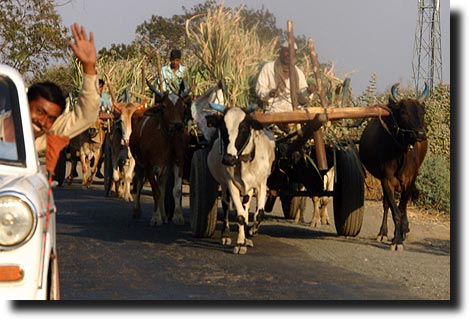 |
|
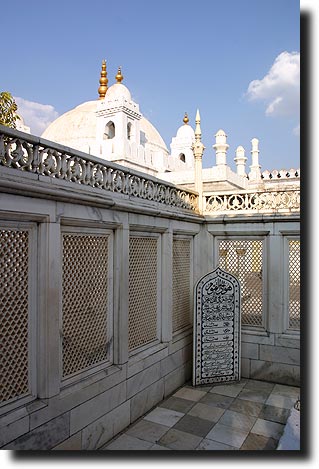 |
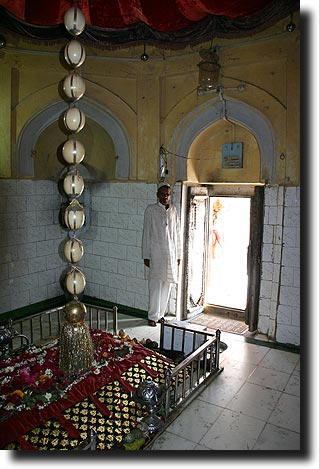 |
|
|
|
||
 |
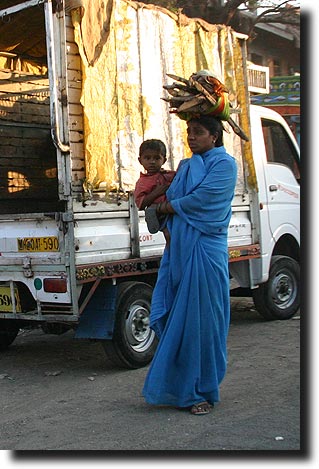 |
|
|
|
||
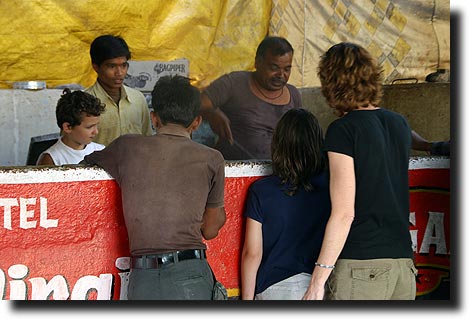
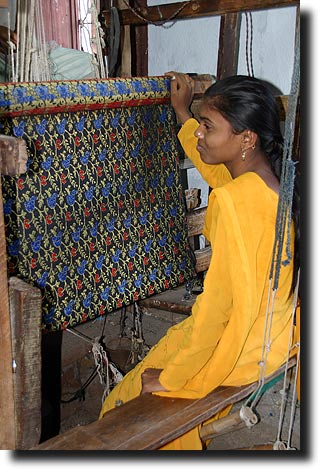
We went to a government sponsored shop that employs women working on the traditional machines to teach and preserve the techniques of this weave. Rather than working off a written pattern, huge bunches of strings are tied with specific knots in a predetermined fashion to relay the color and type of stitch to use at a particular area.
|
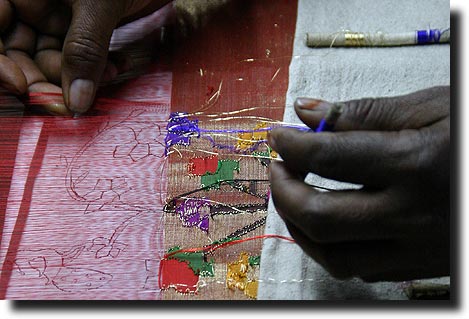
Back in town, Susan wanted to do a little shopping, so she asked Jayved (our driver for the weekend) to take us to a shop that made Himroo material. Apparently this is a locally made only technique that involves weaving golden colored thread into the stitches themselves, and so makes a fascinating study of old customs still kept alive.
|
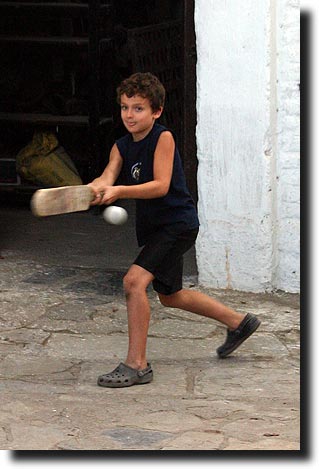
Neat stuff, and we made some purchases, but Breck was sure more interested in playing cricket with the shopkeeper's sons!! |